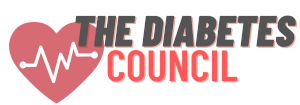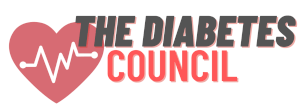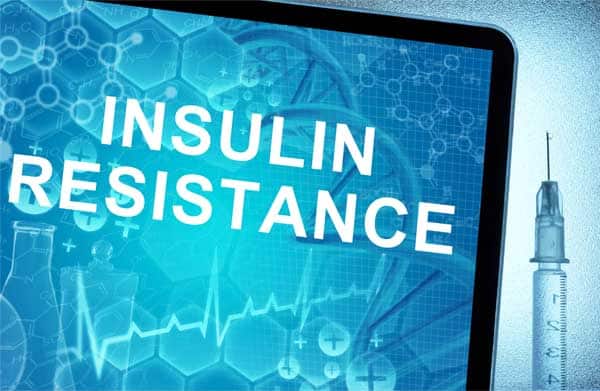
Usually, when you think of ‘double’ it sounds like a good thing. Double the fun, double the money, double the dessert, etc.
However, when you hear ‘double diabetes’ this doesn’t necessarily sound like any fun at all.
Most people are not aware that even such a thing exists. But double diabetes is for those special few people that have a combo of both type 1 and type 2 features.
When someone who has type 1 diabetes develops insulin resistance, which you traditionally see in type 2 diabetes, this is what is known as double diabetes.
It’s important to remember that double diabetes doesn’t take away the seriousness of having type 1 diabetes.
In fact, they will always have type 1 diabetes. But some of the effects of having insulin resistance can be reduced with proper treatment.
I suggest reading the following pieces:
- 10 Certified Diabetes Educators Answer 2 Most Frequently Asked Question
- An Incorrect Diagnosis of Type 2 Diabetes
- Can An Exercise Physiologist Help With Your Diabetes?
- Is Inhaled Insulin a Promising Treatment on the Horizon for Alzheimer’s Disease?
- Polyphagia: The Relationship Between Hunger And Diabetes
Contents
Why Do Type 1’s Develop Insulin Resistance?
Why someone’s body responds in the wrong manner to insulin is still a bit of a mystery. Unfortunately, the majority of people believe that those with type 1 diabetes are not insulin resistant because they commonly are not overweight.
This is however the furthest from the truth you can get. There are a few factors that increase your risk of developing insulin resistance, even as a type 1 diabetic.
These factors include:
- Being over 40 years’ old
- Glucose intolerance history
- Having hypertension or cardiovascular disease
- Low HDL Cholesterol or High Triglycerides
- Having PCOS (Polycystic Ovarian Syndrome)
- Having Non-Alcoholic Fatty Liver Disease
What Exactly is Double Diabetes?
Double Diabetes was first discovered and introduced in 1991. During a research study for those with Type 1 diabetes and a family history of Type 2 diabetes it was shown that these individuals were more likely to become overweight and also have difficulty achieving their target blood sugar control.
Just as the name states, double diabetes is when an individual has both features of Type 1 diabetes and Type 2 diabetes. This is typically when someone with Type 1 develops a resistance to insulin, or when someone with Type 2 diabetes begins to produce autoantibodies to their beta cells.
How Common is it?
The statistical data for double diabetes is not fully established right now for a few different reasons. It can be difficult to tell the type of diabetes someone has. The beliefs that we have known for virtually ever, that someone with type 2 diabetes doesn’t usually experience DKA and those with type 1 diabetes are no longer underweight or rail thin, are no longer entirely true.
Type 2 diabetes used to be looked as an elderly disease, yet there are many people who are diagnosed with type 2 diabetes in their 30s and 40s and beyond. Obesity and insulin resistance are not always present in those with type 2 diabetes and even those with type 1 diabetes can develop these conditions over time.
Experts have suggested that double diabetes affects those with type 1 diabetes who are on a regimen of insulin but haven’t made any lifestyle changes. Insulin use can cause weight gain, which means those with type 1 diabetes must be diligent when it comes to activity levels and healthy eating. Failing to make these changes can potentially introduce a complicated condition of double diabetes.
What You Should Know About Double Diabetes

Here are a few vital pieces of information that you should understand about double diabetes.
Those with Double Diabetes are at a Higher Risk of Developing Macrovascular Complications
The Diabetes Control and Complications trial which was conducted from the year 1983 to 1993 was a huge clinical study to investigate whether maintaining strict glucose control at near perfect, non-diabetic levels would help to deter developing complications. Findings in this study did show that intensive and strict control help to significantly prevent or even delay complications when compared to the traditional therapy methods.
In the year 2007, the study group took another look at all the data collected and then examined whether resistance to insulin was a predictor of any micro and macrovascular complications in those with type 1 diabetes. Their findings during this time then revealed that having a higher level of insulin resistance at the start of the study was linked to an increased risk of developing both types of complications over time.
Not Having the Proper Diagnosis Could Be Fatal
Those who are older in age or overweight might initially get a diagnosis of type 2 diabetes, due to previous misconceptions about the condition. Because of this, the treatment of receiving insulin would be delayed. This can lead to the development of DKA and even death. If you feel you have been improperly diagnosed, it’s important to speak up and voice your concerns so that you can get the proper treatment as soon as possible.
Those with Double Diabetes Need the Right Preventive Care and Management Plan
When there has been a line between a diagnosis of type 1 diabetes and type 2 diabetes firmly established by a medical professional, you may not be getting the best possible treatment options and preventive care.
Using one single term of ‘diabetes’ minimizes the needs of each type of diabetes which are all unique in their own: Type 1 diabetes, Type 2 diabetes, LADA (Latent Autoimmune Diabetes in Adults), MODY (Maturity Onset Diabetes of the Young), Gestational Diabetes and Prediabetes. Double diabetes requires treatment and preventive measures of overlapping types of diabetes, not one single type.
What Can You Do?
Some doctors have begun introducing Type 2 medication treatments to those with type 1 diabetes and insulin resistance. This has been proving effective to help those on an insulin pump or multiple daily injections utilize the insulin effectively. If you are a smoker, it’s important to stop, not only for your lung and respiratory health, but to help reduce the resistance of insulin in the body.
Consider the foods you are eating a head of time to avoid overindulging.
Ask yourself “Does my body need this as fuel right now?” before you consume any food. Lowering your carbohydrate intake and increasing your protein can also help to more effectively manage your blood sugar levels. Less carbohydrates consumed, the less insulin required to convert the glucose from those carbs into energy. You will be effectively giving your body a break from overworking.
Try establishing a plan for portion control when it comes to meal time and sticking to it.
Keeping your weight at the recommended BMI target level for your height, age and shape can also help greatly. Make sure you get up and get moving daily. This doesn’t mean you have to join a gym and it hardcore every single day, but taking a daily walk or playing with kids can be a great start to increasing activity levels.
Further reading:
Wrap-Up
While type 1 and type 2 are both different diseases caused by different factors, this doesn’t mean that you can’t suffer from both types.
Even though you have type 1 diabetes, you may still be at risk genetically or environmentally for developing insulin resistance.
Therefore, it’s important to be your own best advocate when it comes to your health and your body. Take the right steps to help lower your risk of developing it and voice your concerns to your doctor adamantly to ensure you are receiving the best possible treatment options and management plan.
TheDiabetesCouncil Article | Reviewed by Dr. Sergii Vasyliuk MD on May 21, 2020







